A recent Reuters news piece, relying primarily on unnamed sources, has reported that Iran is currently violating both a United Nations embargo and the territorial waters of Kuwait by aiding in the illicit trafficking of arms and by sending military assistance to al Houthi forces in war torn Yemen. Lima Charlie News has investigated the story’s controversial claims.
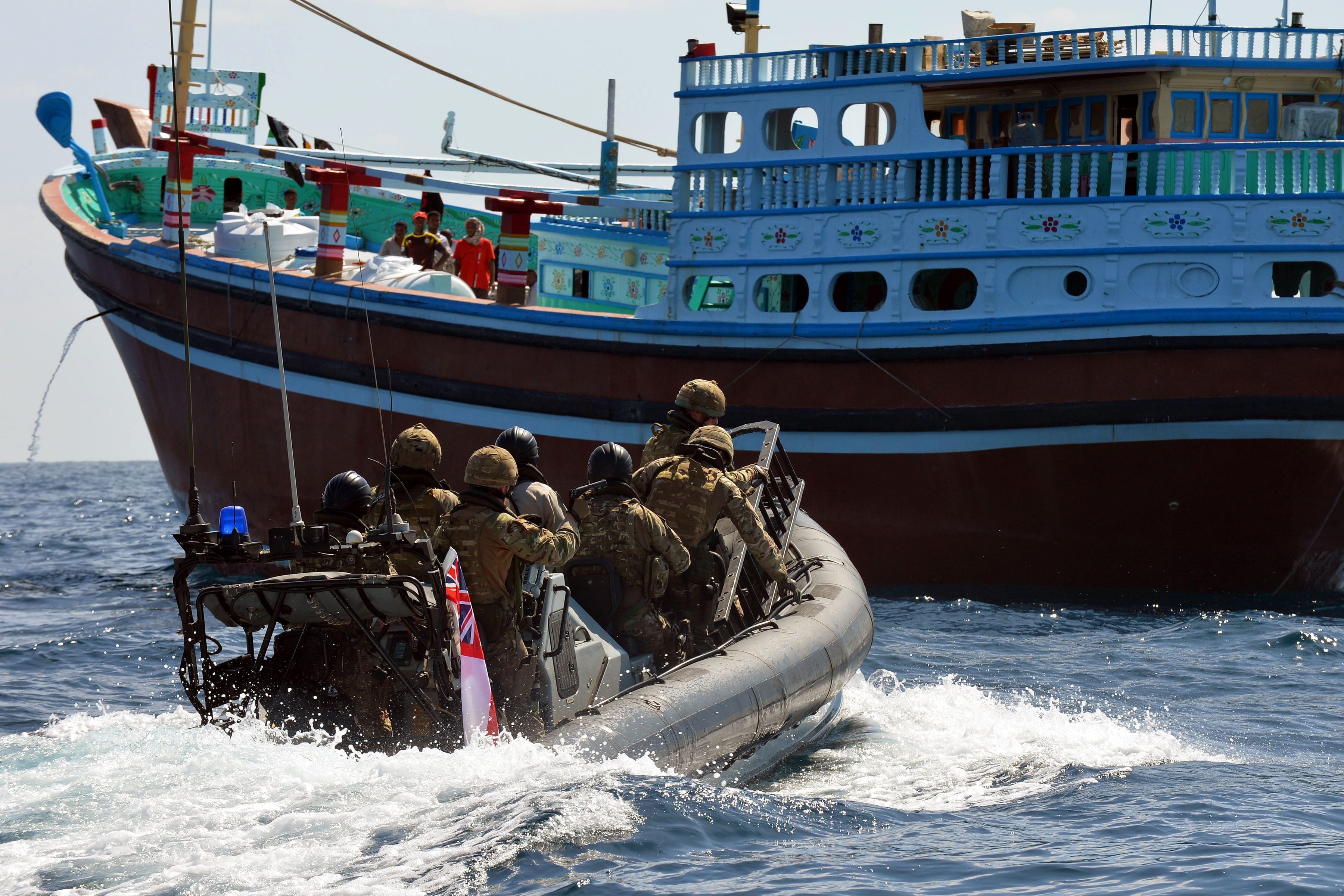
The Reuters Exclusive
The Reuters story, titled Exclusive: Iran Revolutionary Guards find new route to arm Yemen rebels, is not beyond criticism. Kuwait was quick to release a counter statement denying the veracity of the story. It also denied that Iran is using Kuwaiti waters to transport weapons and manpower to Yemen illicitly. Kuwait’s statement went on to encourage the international media to investigate matters.
“The State of Kuwait refuted news by the Reuters news agency regarding Iran’s exploitation of Kuwaiti waters to deliver arms and military assistance to the Houthis in Yemen.”
– Kuwaiti Ministry of Foreign Affairs statement, August 2nd.
While the international community, and most groups monitoring the developments, agree that Iran is directly involved in supporting the Houthis in Yemen, there is disagreement on the details, especially regarding covert arms smuggling.
The Reuters exclusive, citing unnamed sources allegedly familiar with the matter, states that Iran’s Islamic Revolutionary Guards Corps (IRGC) has begun using a new route across the Gulf to transport its clandestine military assistance to Yemen. It specifies that the military assistance Iran provides includes arms, munitions, components to manufacture weapons and other devices, and military advisors.
A critical review of the facts as reported shows that it relies heavily on alleged first-hand observations and admissions from unidentified sources. The story also makes no mention of physical evidence to substantiate its claims.
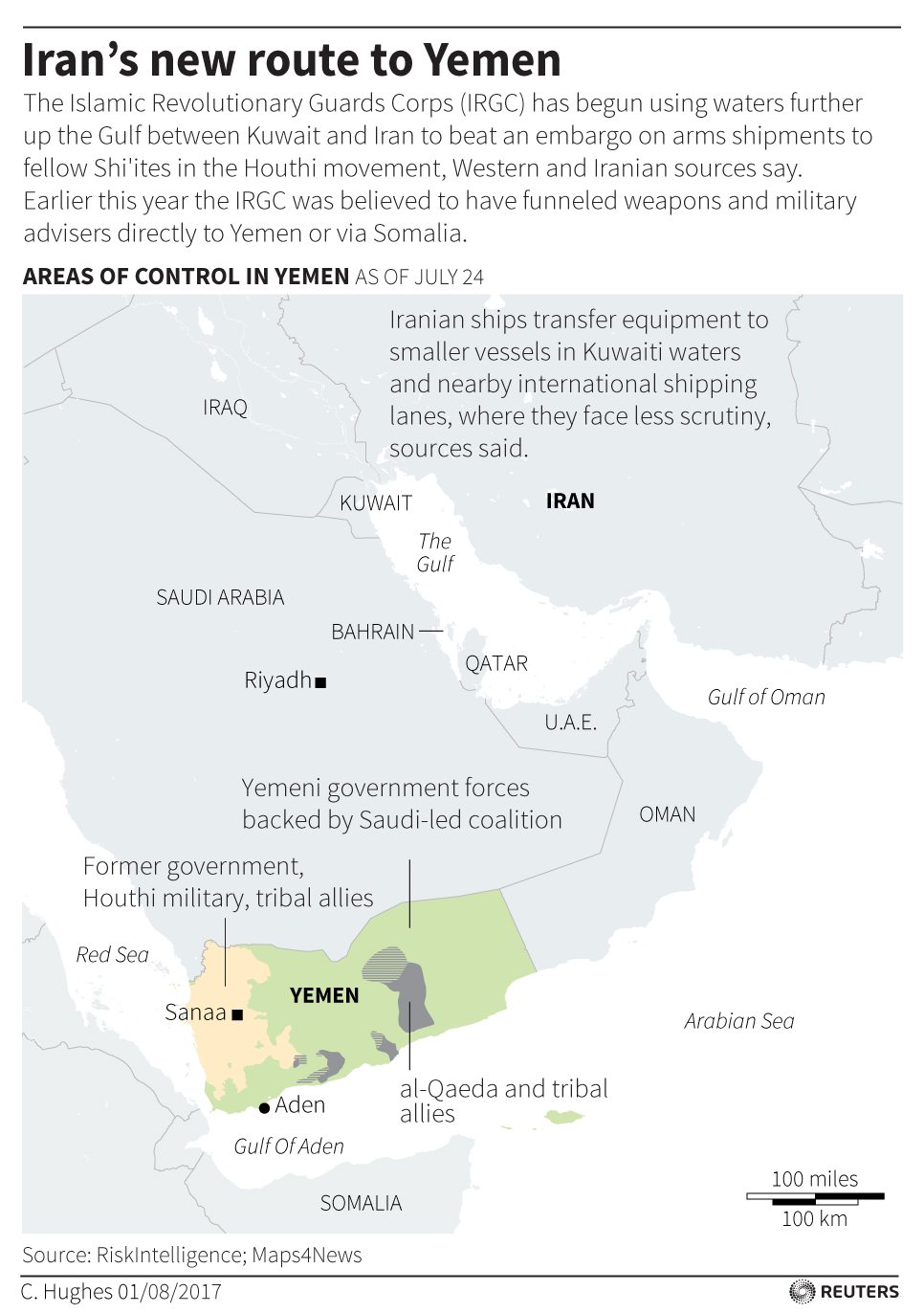
Principal among the unnamed sources is an anonymous senior Iranian official. This source is given little context and raises a few questions. While the anonymity of the source is understandable and must be protected at all costs, it does leave the source’s statements open to question. Is it safe to assume that this Iranian official has insight into the matter? How was he connected to Reuters, or did Reuters even have direct access to him?
If Reuters did not have direct access to this source, and instead received information from an intermediary entity as part of an information package, then the information is suspect. The package could have been contaminated, or created to further a particular context and direction. However, as Reuters is a professional news entity of long standing, it must certainly have heavily vetted and validated its source.
Lima Charlie News has received segments of the originating classified report, written by an outside monitoring entity. This originating report was relied on heavily by the United Nations report, to which the Reuters piece refers. While investigations are still ongoing, the originating report reveals several links between Iran and the al Houthis. Backed by evidence collected, that report details how Iran is shipping weapons and military advisers either by boat or plane through Somalia to Yemen, or directly to Yemen.
Among the findings in the originating report is that Iran is supplying the al Houthi controlled Ministry of Defence in Sana’a with Unmanned Aerial Vehicles (UAVs). The UAVs are built in Iran, and then shipped into Yemen with the intent of final assembly in Sana’a. The report traces parts used in building the UAVs to a civilian distributor of electronics in Tehran, which purchases them from a Taiwanese electronics manufacturing company. While initial shipments of the UAV components were shipped straight to the Tehran distributor, later shipments were requested to be routed through an alleged Hong Kong shell corporation, named Turn Key Logistics. At present, it does not appear that procurement of the parts from the Taiwanese firm violates any embargoes, as they are described as “dual purpose”. An active United Arab Emirate (UAE) investigation is currently looking into these matters.
Recently released reports from other monitoring groups, including the UN and Conflict Armament Research (CAR), have documented proven Iranian arms smuggling to Yemen. Lima Charlie News has been following these developments, and published a story back in November 2016, Iran’s Gunrunners: New Report Establishes Credible Link to Iranian Arms Trafficking, detailing the ongoing efforts to stymie the flow of arms by the International Community.
The Reuters exclusive specified that due to the increased scrutiny of Iranian shipping by international naval vessels on patrol in the Gulf waters around Yemen, to prevent embargo breaking shipments of arms, Iranian contraband routes are no longer focused on the Gulf of Oman and the Arabian Sea. The IRGC has for the last 6 months been using waters further up the Gulf inside Kuwaiti territorial waters.
The story also described the methods that were used during transportation. Once the larger Iranian vessels carrying arms and personnel were in or near Kuwaiti territorial waters, they were transferred to smaller dhows at the northern end of the gulf. These, so called, transshipments allegedly often took place during Kuwaiti coast guard watch changes.
However, this process is questionable as regional geographics and heavy Kuwaiti security presence in the area of the Iranian and Kuwaiti territorial waters make operations as described in the story seem needlessly dangerous and complicated. They involve running an immense risk of exposure. Considering the high quality of IRGC operators and their indepth knowledge in the region, what is described appears uncharacteristically reckless and unlikely.
Attempts to reach the Iranian Embassy in Cairo for comment were left unanswered, and IRGC representatives in Tehran were reluctant to comment. Contacts within the Iranian foreign ministry were likewise unavailable.
US Campaign
The timely release of the Reuters exclusive is well aligned with the current US administration’s mantra and interests in disrupting Iranian influence in the Middle East region. The previous US administration pushed hard to open, and reach, diplomatic discourse with Iran before the end of its term. These diplomatic inroads culminated in the Joint Comprehensive Plan of Action, more commonly known as the Iran Nuclear Deal, in July 2015. The deal was panned by the Obama administration’s opposition.
During the US Presidential election of 2016, the topic became a hot button issue, and President-to-be Donald Trump campaigned extensively on a platform which promised to withdraw the US from diplomatic relations with Iran. Trump only reluctantly agreed to ratify the Nuclear Deal with Iran in August, 2017, while stating that he will consider implementing additional embargoes and sanctions against Iran. A US State Department task force is currently investigating the administration’s options.
Lima Charlie contacts inside the US Intelligence Community say that members from the US State Department have been conducting a low key media campaign in recent months. The campaign aims to create an environment that is receptive to US actions against Iran.
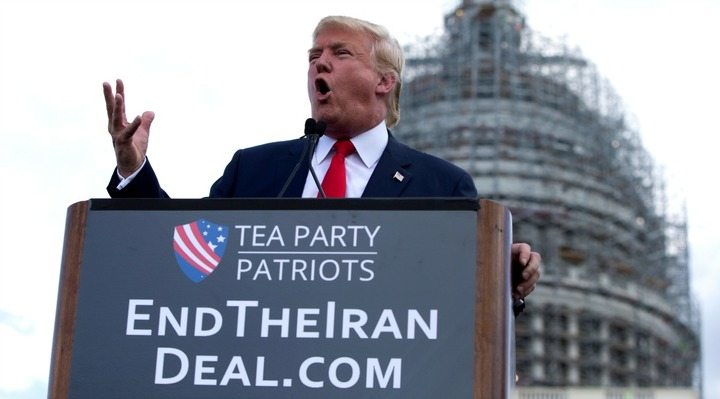
Background
The Yemeni civil war has now entered its second year. Over 10,000 people have died from the fighting, famine, or resulting illnesses. Since October 2016, a cholera epidemic has spread throughout the war torn nation, infecting well over 400,000 people, and solidifying the conflict’s status as one of the worst humanitarian catastrophes in recent times. The international community is finding it increasingly difficult to provide aid and shelter to the exposed civilian population as the fighting continues.
In 2011, in the wake of the so called Arab Spring, the already frail national central government in Sana’a was further destabilized, and its leadership of thirty years replaced in a bloodless political overthrow. Using the public display and discourse in the country, Saudi Arabia launched a regional campaign to have the Nasserist-styled strongman President Ali Abdullah Saleh replaced by the Saudi-aligned then-Vice President, Abdrabbuh Mansur Hadi. A public election was held in February 2012, with then-President Hadi, being the sole candidate in the election. He won by 99.8% of the votes.
While the world was busy observing the democratic process in Sana’a, the nation wide protracted insurgency continued to brew. What had begun as the 2011 “Yemen Crisis”, which amplified the multitude of domestic problems, including a protracted counter-insurgency problem, turned into a full fledged civil war.
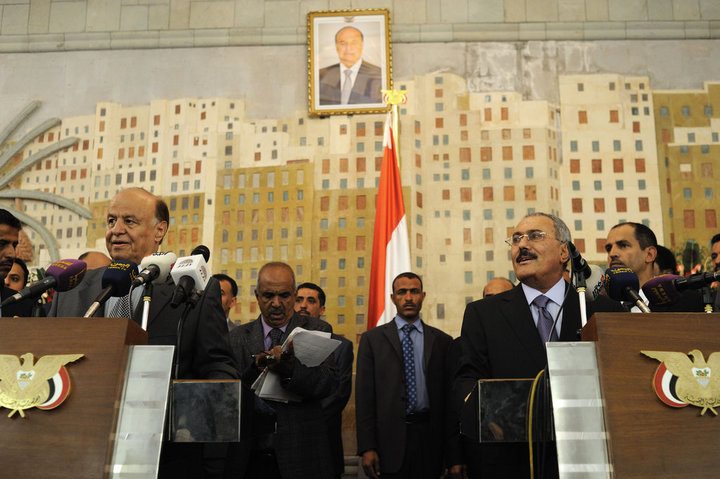
With the central government being led by President Hadi, who originated from the southern parts of Yemen, with the backing of Saudi Arabia the Zaydi Shia minority in the North felt that they were being pushed aside. The main representatives of this minority, the al Houthi family and movement, had taken part in the pro-Hadi movement during the 2011 protests, and felt entitled to inclusion in the government. As Hadi was structuring his new cabinet, he excluded the Zaidi Shia representatives, chiefly those from the al Houthi tribe and movement. The al Houthis, who had already been engaged in a 20-year long insurgency against the central government under then-President Saleh, renewed their military campaign efforts.

With al Qaeda in the Arabian Peninsula (AQAP) in the south, Iranian-backed Zaidi Shia al Houthi rebels in the north, and a failing Saudi-backed central state in the middle, a brewing civil war quickly became a proxy war between regional power players.
By late 2014, the Houthis joined forces with the ousted president Saleh and forces loyal to him. With the help of these forces, Houthis took control of the capital and much of the north. The internationally recognized government led by President Hadi fled to Aden and shortly thereafter went into exile in Saudi Arabia. The Yemen civil war surged, with civilians being caught in the middle. A power vacuum quickly formed in the countryside, and AQAP went from being a powerful terrorist organization, to taking a chapter out of the Iranian militia-proxy Hezbollah and becoming an alternative state. AQAP began providing security, healthcare, social services, even kindergarten services. All under the mantle of its black banners.
Saudi Arabia, concerned over having lost its newly created and propped up Hadi-led government and the growing Iranian influence in Yemen, created a military Sunni-Gulf State coalition to take back Yemen from the Zaidi Shia movement.
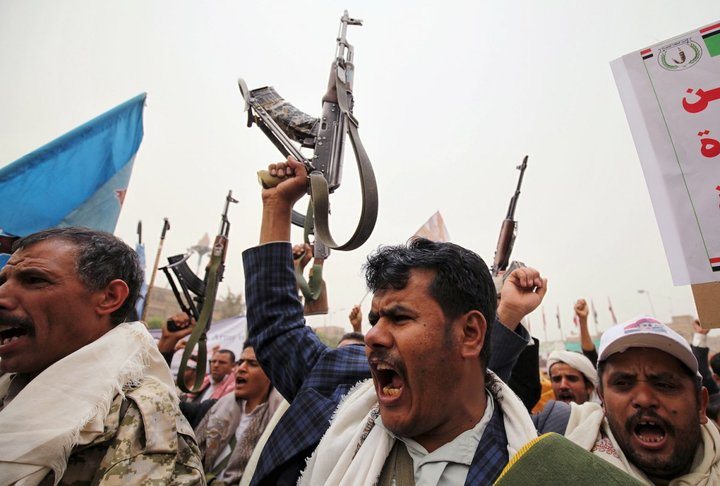
Today Yemen is torn between multiple factions, contesting land and leadership. The Houthi-Saleh bloc, with its strong ties to Shia Iran, controls the capital and large parts of the country. The internationally recognized Hadi-government back in Aden, with loyalist forces paid for by Saudi, and the Saudi-led coalition, continues to battle on the frontlines. The civil war fits the very definition of a proxy war, conducted between Saudi Arabia and Iran, both meddling and wreaking havoc on each other, with civilians in the middle.
Throughout the war several efforts to negotiate a truce have been attempted. Some have been successful in the temporary sense, but none have resulted in lasting results. Neither side in the conflict appears truly interested in negotiating until the fluidity on the battlefield calms down. Recent efforts to revive the peace process, by US Ambassador to Yemen, Matthew Tueller, have led to some dialog and progress. It is generally perceived, however, that top-level diplomatic talks are unlikely to occur as long as the Iranian influence in the al Houthi movement is as strong as it is. The influence will dictate that the al Houthis avoid negotiations, and will at the very least discourage Saudi Arabia from engaging in open talks.
Lima Charlie News will continue to follow the events on the ground in Yemen, and throughout the region. Stay updated by following us on Twitter, @LimaCharlieNews.
John Sjoholm, Lima Charlie News
John Sjoholm is Lima Charlie’s Middle East Bureau Chief, Managing Editor, and founder of the consulting firm Erudite Group. A seasoned expert on Middle East and North Africa matters, he has a background in security contracting and has served as a geopolitical advisor to regional leaders. He was educated in religion and languages in Sana’a, Yemen, and Cairo, Egypt, and has lived in the region since 2005, contributing to numerous Western-supported stabilisation projects. He currently resides in Jordan. Follow John on Twitter @JohnSjoholmLC
Lima Charlie World provides global news, featuring insight & analysis by military veterans, intelligence professionals and foreign policy experts Worldwide.
For up-to-date news, please follow us on twitter at @LimaCharlieNews
In case you missed it:


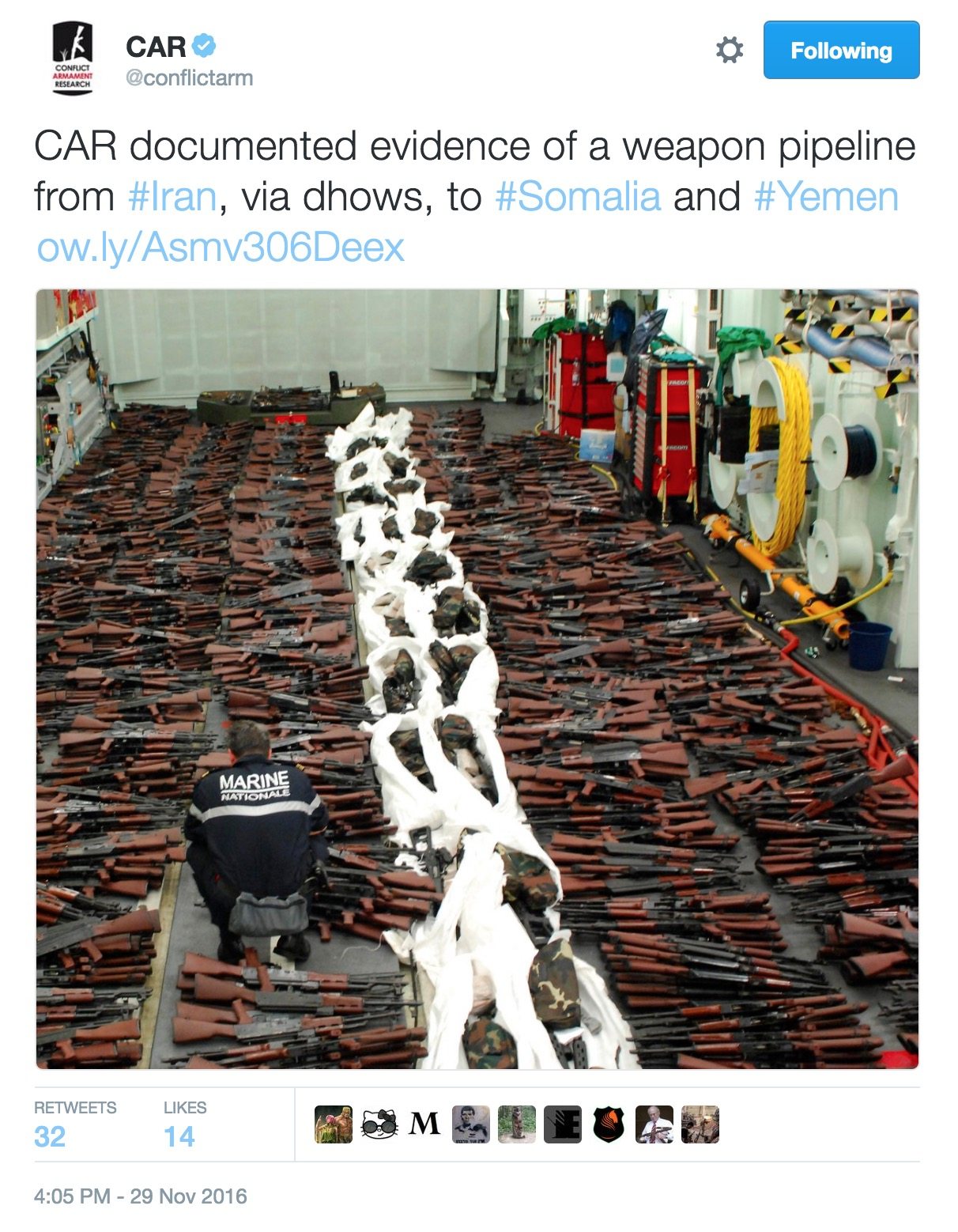
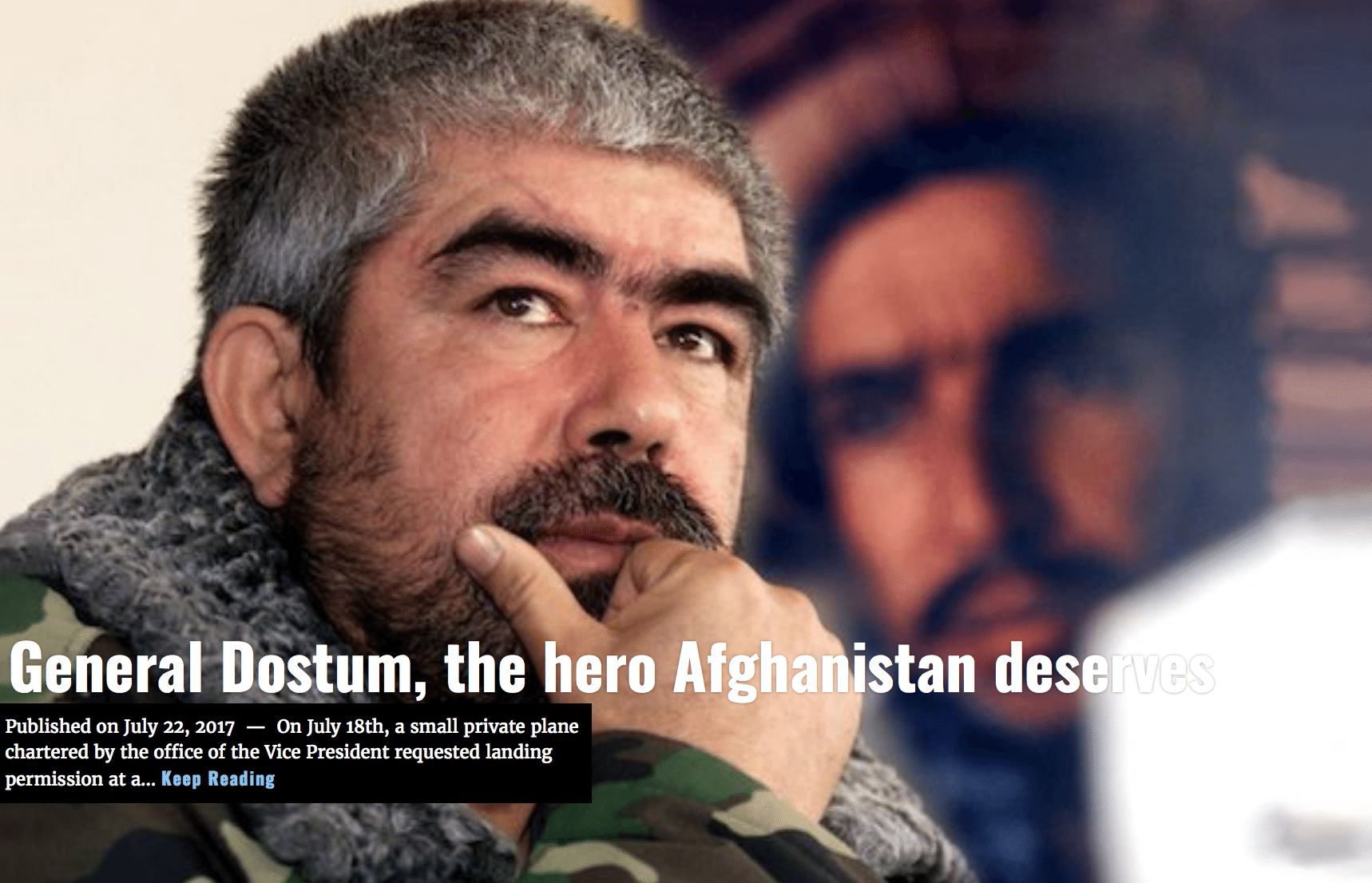
![Iranian crackdown on MEK shows the activist group has popular support [Lima Charlie News]](https://limacharlienews.com/wp-content/uploads/2019/05/Iran-MEK-Lima-Charlie-001-480x384.png)
![The Mind of Bolton - AUMF and the New Iran War [Lima Charlie News]](https://limacharlienews.com/wp-content/uploads/2019/05/Inside-the-mind-of-Bolton-Lima-Charlie-News-main-01-480x384.png)
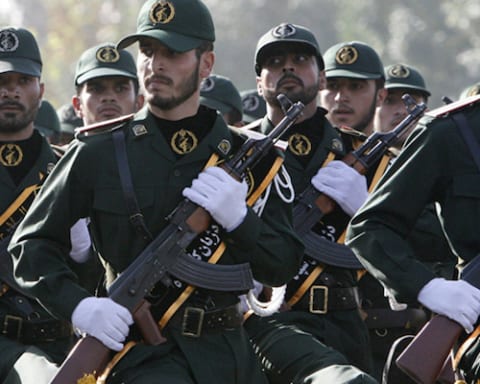
![Africa’s Elections | In Malawi, food, land, corruption dominate [Lima Charlie News]](https://limacharlienews.com/wp-content/uploads/2019/06/Malawi-election-Food-land-corruption-480x384.jpg)
![Image The Rwandan Jewel - Peacekeepers, Conflict Minerals and Lots of Foreign Aid [Lima Charlie World]](https://limacharlienews.com/wp-content/uploads/2019/03/Rwanda-Jewel-480x384.jpg)
![Image [Women's Day Warriors - Africa's queens, rebels and freedom fighters][Lima Charlie News]](https://limacharlienews.com/wp-content/uploads/2019/03/Womens-Day-Warriors-Lima-Charlie-News-480x384.jpg)
![Image Zimbabwe’s Election - Is there a path ahead? [Lima Charlie News]](https://limacharlienews.com/wp-content/uploads/2018/09/Zimbabwe’s-Election-Is-there-a-path-ahead-Lima-Charlie-News-480x384.png)
![[Silver lining for China in Zimbabwe’s violent elections][Lima Charlie News]](https://limacharlienews.com/wp-content/uploads/2018/08/Screen-Shot-2018-08-02-at-12.51.35-PM-480x384.png)
![Iranian crackdown on MEK shows the activist group has popular support [Lima Charlie News]](https://limacharlienews.com/wp-content/uploads/2019/05/Iran-MEK-Lima-Charlie-001-150x100.png)
![The Mind of Bolton - AUMF and the New Iran War [Lima Charlie News]](https://limacharlienews.com/wp-content/uploads/2019/05/Inside-the-mind-of-Bolton-Lima-Charlie-News-main-01-150x100.png)